See Baby Discriminate
Kids as young as 6 months judge others based on skin color. What's a parent to do?
By Po Bronson and Ashley Merryman | NEWSWEEK
Published Sep 5, 2009
From the magazine issue dated Sep 14, 2009
At the Children's Research Lab at the University of Texas, a database is kept on thousands of families in the Austin area who have volunteered to be available for scholarly research. In 2006 Birgitte Vittrup recruited from the database about a hundred families, all of whom were Caucasian with a child 5 to 7 years old.
The goal of Vittrup's study was to learn if typical children's videos with multicultural storylines have any beneficial effect on children's racial attitudes. Her first step was to give the children a Racial Attitude Measure, which asked such questions as:
How many White people are nice?
(Almost all) (A lot) (Some) (Not many) (None)
How many Black people are nice?
(Almost all) (A lot) (Some) (Not many) (None)
During the test, the descriptive adjective "nice" was replaced with more than 20 other adjectives, like "dishonest," "pretty," "curious," and "snobby."
Vittrup sent a third of the families home with multiculturally themed videos for a week, such as an episode of Sesame Street in which characters visit an African-American family's home, and an episode of Little Bill, where the entire neighborhood comes together to clean the local park.
In truth, Vittrup didn't expect that children's racial attitudes would change very much just from watching these videos. Prior research had shown that multicultural curricula in schools have far less impact than we intend them to—largely because the implicit message "We're all friends" is too vague for young children to understand that it refers to skin color.
Yet Vittrup figured explicit conversations with parents could change that. So a second group of families got the videos, and Vittrup told these parents to use them as the jumping-off point for a discussion about interracial friendship. She provided a checklist of points to make, echoing the shows' themes. "I really believed it was going to work," Vittrup recalls.
The last third were also given the checklist of topics, but no videos. These parents were to discuss racial equality on their own, every night for five nights.
At this point, something interesting happened. Five families in the last group abruptly quit the study. Two directly told Vittrup, "We don't want to have these conversations with our child. We don't want to point out skin color."
Vittrup was taken aback—these families volunteered knowing full well it was a study of children's racial attitudes. Yet once they were aware that the study required talking openly about race, they started dropping out.
It was no surprise that in a liberal city like Austin, every parent was a welcoming multiculturalist, embracing diversity. But according to Vittrup's entry surveys, hardly any of these white parents had ever talked to their children directly about race. They might have asserted vague principles—like "Everybody's equal" or "God made all of us" or "Under the skin, we're all the same"—but they'd almost never called attention to racial differences.
They wanted their children to grow up colorblind. But Vittrup's first test of the kids revealed they weren't colorblind at all. Asked how many white people are mean, these children commonly answered, "Almost none." Asked how many blacks are mean, many answered, "Some," or "A lot." Even kids who attended diverse schools answered the questions this way.
More disturbing, Vittrup also asked all the kids a very blunt question: "Do your parents like black people?" Fourteen percent said outright, "No, my parents don't like black people"; 38 percent of the kids answered, "I don't know." In this supposed race-free vacuum being created by parents, kids were left to improvise their own conclusions—many of which would be abhorrent to their parents.
Vittrup hoped the families she'd instructed to talk about race would follow through. After watching the videos, the families returned to the Children's Research Lab for retesting. To Vittrup's complete surprise, the three groups of children were statistically the same—none, as a group, had budged very much in their racial attitudes. At first glance, the study was a failure.
Combing through the parents' study diaries, Vittrup realized why. Diary after diary revealed that the parents barely mentioned the checklist items. Many just couldn't talk about race, and they quickly reverted to the vague "Everybody's equal" phrasing.
Of all those Vittrup told to talk openly about interracial friendship, only six families managed to actually do so. And, for all six, their children dramatically improved their racial attitudes in a single week. Talking about race was clearly key. Reflecting later about the study, Vittrup said, "A lot of parents came to me afterwards and admitted they just didn't know what to say to their kids, and they didn't want the wrong thing coming out of the mouth of their kids."
We all want our children to be unintimidated by differences and have the social skills necessary for a diverse world. The question is, do we make it worse, or do we make it better, by calling attention to race?
The election of President Barack Obama marked the beginning of a new era in race relations in the United States—but it didn't resolve the question as to what we should tell children about race. Many parents have explicitly pointed out Obama's brown skin to their young children, to reinforce the message that anyone can rise to become a leader, and anyone—regardless of skin color—can be a friend, be loved, and be admired.
Others think it's better to say nothing at all about the president's race or ethnicity—because saying something about it unavoidably teaches a child a racial construct. They worry that even a positive statement ("It's wonderful that a black person can be president") still encourages a child to see divisions within society. For the early formative years, at least, they believe we should let children know a time when skin color does not matter.
What parents say depends heavily on their own race: a 2007 study in the Journal of Marriage and Family found that out of 17,000 families with kindergartners, nonwhite parents are about three times more likely to discuss race than white parents; 75 percent of the latter never, or almost never, talk about race.
In our new book, NurtureShock, we argue that many modern strategies for nurturing children are backfiring—because key twists in the science have been overlooked. Small corrections in our thinking today could alter the character of society long term, one future citizen at a time. The way white families introduce the concept of race to their children is a prime example.
For decades, it was assumed that children see race only when society points it out to them. However, child-development researchers have increasingly begun to question that presumption. They argue that children see racial differences as much as they see the difference between pink and blue—but we tell kids that "pink" means for girls and "blue" is for boys. "White" and "black" are mysteries we leave them to figure out on their own.
It takes remarkably little for children to develop in-group preferences. Vittrup's mentor at the University of Texas, Rebecca Bigler, ran an experiment in three preschool classrooms, where 4- and 5-year-olds were lined up and given T shirts. Half the kids were randomly given blue T shirts, half red. The children wore the shirts for three weeks. During that time, the teachers never mentioned their colors and never grouped the kids by shirt color.
The kids didn't segregate in their behavior. They played with each other freely at recess. But when asked which color team was better to belong to, or which team might win a race, they chose their own color. They believed they were smarter than the other color. "The Reds never showed hatred for Blues," Bigler observed. "It was more like, 'Blues are fine, but not as good as us.' " When Reds were asked how many Reds were nice, they'd answer, "All of us." Asked how many Blues were nice, they'd answer, "Some." Some of the Blues were mean, and some were dumb—but not the Reds.
Bigler's experiment seems to show how children will use whatever you give them to create divisions—seeming to confirm that race becomes an issue only if we make it an issue. So why does Bigler think it's important to talk to children about race as early as the age of 3?
Her reasoning is that kids are developmentally prone to in-group favoritism; they're going to form these preferences on their own. Children naturally try to categorize everything, and the attribute they rely on is that which is the most clearly visible.
We might imagine we're creating color-blind environments for children, but differences in skin color or hair or weight are like differences in gender—they're plainly visible. Even if no teacher or parent mentions race, kids will use skin color on their own, the same way they use T-shirt colors. Bigler contends that children extend their shared appearances much further—believing that those who look similar to them enjoy the same things they do. Anything a child doesn't like thus belongs to those who look the least similar to him. The spontaneous tendency to assume your group shares characteristics—such as niceness, or smarts—is called essentialism.
Within the past decade or so, developmental psychologists have begun a handful of longitudinal studies to determine exactly when children develop bias. Phyllis Katz, then a professor at the University of Colorado, led one such study—following 100 black children and 100 white children for their first six years. She tested these children and their parents nine times during those six years, with the first test at 6 months old.
How do researchers test a 6-month-old? They show babies photographs of faces. Katz found that babies will stare significantly longer at photographs of faces that are a different race from their parents, indicating they find the face out of the ordinary. Race itself has no ethnic meaning per se—but children's brains are noticing skin-color differences and trying to understand their meaning.
When the kids turned 3, Katz showed them photographs of other children and asked them to choose whom they'd like to have as friends. Of the white children, 86 percent picked children of their own race. When the kids were 5 and 6, Katz gave these children a small deck of cards, with drawings of people on them. Katz told the children to sort the cards into two piles any way they wanted. Only 16 percent of the kids used gender to split the piles. But 68 percent of the kids used race to split the cards, without any prompting. In reporting her findings, Katz concluded: "I think it is fair to say that at no point in the study did the children exhibit the Rousseau type of color-blindness that many adults expect."
The point Katz emphasizes is that this period of our children's lives, when we imagine it's most important to not talk about race, is the very developmental period when children's minds are forming their first conclusions about race.
Several studies point to the possibility of developmental windows—stages when children's attitudes might be most amenable to change. In one experiment, children were put in cross-race study groups, and then were observed on the playground to see if the interracial classroom time led to interracial play at recess. The researchers found mixed study groups worked wonders with the first-grade children, but it made no difference with third graders. It's possible that by third grade, when parents usually recognize it's safe to start talking a little about race, the developmental window has already closed.
The other deeply held assumption modern parents have is what Ashley and I have come to call the Diverse Environment Theory. If you raise a child with a fair amount of exposure to people of other races and cultures, the environment becomes the message. Because both of us attended integrated schools in the 1970s—Ashley in San Diego and, in my case, Seattle—we had always accepted this theory's tenets: diversity breeds tolerance, and talking about race was, in and of itself, a diffuse kind of racism.
But my wife and I saw this differently in the years after our son, Luke, was born. When he was 4 months old, Luke began attending a preschool located in San Francisco's Fillmore/Western Addition neighborhood. One of the many benefits of the school was its great racial diversity. For years our son never once mentioned the color of anyone's skin. We never once mentioned skin color, either. We thought it was working perfectly.
Then came Martin Luther King Jr. Day at school, two months before his fifth birthday. Luke walked out of preschool that Friday before the weekend and started pointing at everyone, proudly announcing, "That guy comes from Africa. And she comes from Africa, too!" It was embarrassing how loudly he did this. "People with brown skin are from Africa," he'd repeat. He had not been taught the names for races—he had not heard the term "black" and he called us "people with pinkish-whitish skin." He named every kid in his schoolroom with brown skin, which was about half his class.
My son's eagerness was revealing. It was obvious this was something he'd been wondering about for a while. He was relieved to have been finally given the key. Skin color was a sign of ancestral roots.
Over the next year, we started to overhear one of his white friends talking about the color of their skin. They still didn't know what to call their skin, so they used the phrase "skin like ours." And this notion of ours versus theirs started to take on a meaning of its own. As these kids searched for their identities, skin color had become salient.
Soon, I overheard this particular white boy telling my son, "Parents don't like us to talk about our skin, so don't let them hear you."
As a parent, I dealt with these moments explicitly, telling my son it was wrong to choose anyone as his friend, or his "favorite," on the basis of skin color. We pointed out how certain friends wouldn't be in our lives if we picked friends for their color. Over time he not only accepted but embraced this lesson. Now he talks openly about equality and the wrongfulness of discrimination.
Not knowing then what I do now, I had a hard time understanding my son's initial impulses. Katz's work helped me to realize that Luke was never actually colorblind. He didn't talk about race in his first five years because our silence had unwittingly communicated that race was something he could not ask about.
The Diverse Environment Theory is the core principle behind school desegregation today. Like most people, I assumed that after 30 years of desegregation, it would have a long track record of scientific research proving that the Diverse Environment Theory works. Then Ashley and I began talking to the scholars who've compiled that very research.
In the summer of 2007, led by the Civil Rights Project, a dozen scholars wrote an amicus brief to the U.S. Supreme Court supporting school desegregation in Louisville, Ky., and Seattle. By the time the brief reached the court, 553 scientists had signed on in support. However, as much as the scientists all supported active desegregation, the brief is surprisingly circumspect in its advocacy: the benefits of desegregation are qualified with words like "may lead" and "can improve." "Mere school integration is not a panacea," the brief warns.
UT's Bigler was one of the scholars heavily involved in the process of its creation. Bigler is an adamant proponent of desegregation in schools on moral grounds. "It's an enormous step backward to increase social segregation," she says. However, she also admitted that "in the end, I was disappointed with the amount of evidence social psychology could muster [to support it]. Going to integrated schools gives you just as many chances to learn stereotypes as to unlearn them."
The unfortunate twist of diverse schools is that they don't necessarily lead to more cross-race relationships. Often it's the opposite. Duke University's James Moody—an expert on how adolescents form and maintain social networks—analyzed data on more than 90,000 teenagers at 112 different schools from every region of the country. The students had been asked to name their five best male friends and their five best female friends. Moody matched the ethnicity of the student with the race of each named friend, then compared the number of each student's cross-racial friendships with the school's overall diversity.
Moody found that the more diverse the school, the more the kids self-segregate by race and ethnicity within the school, and thus the likelihood that any two kids of different races have a friendship goes down.
Moody included statistical controls for activities, sports, academic tracking, and other school-structural conditions that tend to desegregate (or segregate) students within the school. The rule still holds true: more diversity translates into more division among students. Those increased opportunities to interact are also, effectively, increased opportunities to reject each other. And that is what's happening.
As a result, junior-high and high-school children in diverse schools experience two completely contrasting social cues on a daily basis. The first cue is inspiring—that many students have a friend of another race. The second cue is tragic—that far more kids just like to hang with their own. It's this second dynamic that becomes more and more visible as overall school diversity goes up. As a child circulates through school, she sees more groups that her race disqualifies her from, more lunchroom tables she can't sit at, and more implicit lines that are taboo to cross. This is unmissable even if she, personally, has friends of other races. "Even in multiracial schools, once young people leave the classroom, very little interracial discussion takes place because a desire to associate with one's own ethnic group often discourages interaction between groups," wrote Brendesha Tynes of the University of Illinois at Urbana-Champaign.
All told, the odds of a white high-schooler in America having a best friend of another race is only 8 percent. Those odds barely improve for the second-best friend, or the third-best, or the fifth. For blacks, the odds aren't much better: 85 percent of black kids' best friends are also black. Cross-race friends also tend to share a single activity, rather than multiple activities; as a result, these friendships are more likely to be lost over time, as children transition from middle school to high school.
I can't help but wonder—would the track record of desegregation be so mixed if parents reinforced it, rather than remaining silent? It is tempting to believe that because their generation is so diverse, today's children grow up knowing how to get along with people of every race. But numerous studies suggest that this is more of a fantasy than a fact.
Is it really so difficult to talk with children about race when they're very young? What jumped out at Phyllis Katz, in her study of 200 black and white children, was that parents are very comfortable talking to their children about gender, and they work very hard to counterprogram against boy-girl stereotypes. That ought to be our model for talking about race. The same way we remind our daughters, "Mommies can be doctors just like daddies," we ought to be telling all children that doctors can be any skin color. It's not complicated what to say. It's only a matter of how often we reinforce it.
Shushing children when they make an improper remark is an instinctive reflex, but often the wrong move. Prone to categorization, children's brains can't help but attempt to generalize rules from the examples they see. It's embarrassing when a child blurts out, "Only brown people can have breakfast at school," or "You can't play basketball; you're white, so you have to play baseball." But shushing them only sends the message that this topic is unspeakable, which makes race more loaded, and more intimidating.
To be effective, researchers have found, conversations about race have to be explicit, in unmistakable terms that children understand. A friend of mine repeatedly told her 5-year-old son, "Remember, everybody's equal." She thought she was getting the message across. Finally, after seven months of this, her boy asked, "Mommy, what's 'equal' mean?"
Bigler ran a study in which children read brief biographies of famous African-Americans. For instance, in a biography of Jackie Robinson, they read that he was the first African-American in the major leagues. But only half read about how he'd previously been relegated to the Negro Leagues, and how he suffered taunts from white fans. Those facts—in five brief sentences were omitted in the version given to the other children.
After the two-week history class, the children were surveyed on their racial attitudes. White children who got the full story about historical discrimination had significantly better attitudes toward blacks than those who got the neutered version. Explicitness works. "It also made them feel some guilt," Bigler adds. "It knocked down their glorified view of white people." They couldn't justify in-group superiority.
Minority parents are more likely to help their children develop a racial identity from a young age. April Harris-Britt, a clinical psychologist and professor at the University of North Carolina at Chapel Hill, found that all minority parents at some point tell their children that discrimination is out there, but they shouldn't let it stop them. Is this good for them? Harris-Britt found that some preparation for bias was beneficial, and it was necessary—94 percent of African-American eighth graders reported to Harris-Britt that they'd felt discriminated against in the prior three months.
But if children heard these preparation-for-bias warnings often (rather than just occasionally), they were significantly less likely to connect their successes to effort, and much more likely to blame their failures on their teachers—whom they saw as biased against them.
Harris-Britt warns that frequent predictions of future discrimination ironically become as destructive as experiences of actual discrimination: "If you overfocus on those types of events, you give the children the message that the world is going to be hostile—you're just not valued and that's just the way the world is."
Preparation for bias is not, however, the only way minorities talk to their children about race. The other broad category of conversation, in Harris-Britt's analysis, is ethnic pride. From a very young age, minority children are coached to be proud of their ethnic history. She found that this was exceedingly good for children's self-confidence; in one study, black children who'd heard messages of ethnic pride were more engaged in school and more likely to attribute their success to their effort and ability.
That leads to the question that everyone wonders but rarely dares to ask. If "black pride" is good for African-American children, where does that leave white children? It's horrifying to imagine kids being "proud to be white." Yet many scholars argue that's exactly what children's brains are already computing. Just as minority children are aware that they belong to an ethnic group with less status and wealth, most white children naturally decipher that they belong to the race that has more power, wealth, and control in society; this provides security, if not confidence. So a pride message would not just be abhorrent—it'd be redundant.
Over the course of our research, we heard many stories of how people—from parents to teachers—were struggling to talk about race with their children. For some, the conversations came up after a child had made an embarrassing comment in public. A number had the issue thrust on them, because of an interracial marriage or an international adoption. Still others were just introducing children into a diverse environment, wondering when and if the timing was right.
But the story that most affected us came from a small town in rural Ohio. Two first-grade teachers, Joy Bowman and Angela Johnson, had agreed to let a professor from Ohio State University, Jeane Copenhaver-Johnson, observe their classrooms for the year. Of the 33 children, about two thirds were white, while the others were black or of mixed-race descent.
It being December, the teachers had decided to read to their classes 'Twas the Night B'fore Christmas, Melodye Rosales's retelling of the Clement C. Moore classic. As the teachers began reading, the kids were excited by the book's depiction of a family waiting for Santa to come. A few children, however, quietly fidgeted. They seemed puzzled that this storybook was different: in this one, it was a black family all snug in their beds.
Then there was the famed clatter on the roof. The children leaned in to get their first view of Santa and the sleigh as Johnson turned the page—
And they saw that Santa was black.
"He's black!" gasped a white little girl.
A white boy exclaimed, "I thought he was white!"
Immediately, the children began to chatter about the stunning development. At the ripe old ages of 6 and 7, the children had no doubt that there was a Real Santa. Of that they were absolutely sure. But suddenly there was this huge question mark. Could Santa be black? And if so, what did that mean?
While some of the black children were delighted with the idea that Santa could be black, others were unsure. A couple of the white children rejected this idea out of hand: a black Santa couldn't be real.
But even the little girl the most adamant that the Real Santa must be white came around to accept the possibility that a black Santa could fill in for White Santa if he was hurt. And she still gleefully yelled along with the Black Santa's final "Merry Christmas to All! Y'all Sleep Tight."
Other children offered the idea that perhaps Santa was "mixed with black and white"—something in the middle, like an Indian. One boy went with a two-Santa hypothesis: White Santa and Black Santa must be friends who take turns visiting children. When a teacher made the apparently huge mistake of saying that she'd never seen Santa, the children all quickly corrected her: everyone had seen Santa at the mall. Not that that clarified the situation any.
The debate raged for a week, in anticipation of a school party. The kids all knew Real Santa was the guest of honor.
Then Santa arrived at the party—and he was black. Just like in the picture book.
Some white children said that this black Santa was too thin: that meant that the Real Santa was the fat white one at Kmart. But one of the white girls retorted that she had met the man and was convinced. Santa was brown.
Most of the black children were exultant, since this proved that Santa was black. But one of them, Brent, still doubted—even though he really wanted a black Santa to be true. So he bravely confronted Santa.
"There ain't no black Santas!" Brent insisted.
"Lookit here." Santa pulled up a pant leg.
A thrilled Brent was sold. "This is a black Santa!" he yelled. "He's got black skin and his black boots are like the white Santa's boots."
A black-Santa storybook wasn't enough to crush every stereotype. When Johnson later asked the kids to draw Santa, even the black kids who were excited about a black Santa still depicted him with skin as snowy white as his beard.
But the shock of the Santa storybook was the catalyst for the first graders to have a yearlong dialogue about race issues. The teachers began regularly incorporating books that dealt directly with issues of racism into their reading.
And when the children were reading a book on Martin Luther King Jr. and the civil-rights movement, both a black and a white child noticed that white people were nowhere to be found in the story. Troubled, they decided to find out just where in history both peoples were.
Subscribe to:
Post Comments (Atom)
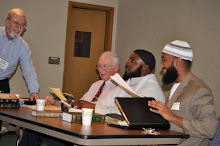


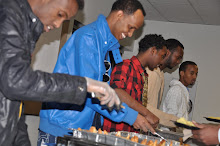





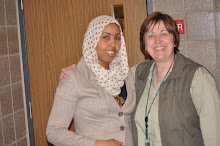







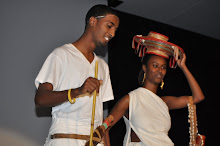








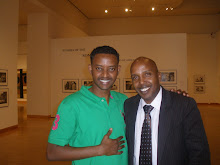























No comments:
Post a Comment